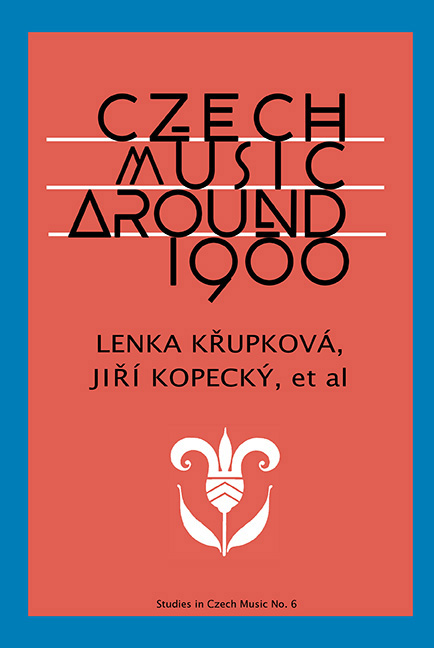Book contents
- Frontmatter
- Table of Contents
- Introductory Remarks on the Conception of This Book
- Flowers in the Graveyard, Tombstones in the Garden
- The “Other World” of Music at the Turn of the Century
- In the Footsteps of Tradition: The Spirit of Romanticism
- Czech Music at the Heart of European Music round 1900
- The Clash with Compositional Issues of European Music
- The Concept of Multi-Movement Structure within a Single Movement in the Music of Vítězslav Novák
- Heritage and New Paths in the Piano Sonatas of Vítězslav Novák and Leoš Janáček
- Josef Suk's Ripening and the Birth of the Czechoslovak Republic
- The Consequences of Conflict in the Czech Musical World: Zdenek Fibich as a Point of Contention in Novák's Polemics with Nejedlý
- Index
- List of Illustrations
- About the Authors
- List of Sources Cited
The Concept of Multi-Movement Structure within a Single Movement in the Music of Vítězslav Novák
from The Clash with Compositional Issues of European Music
- Frontmatter
- Table of Contents
- Introductory Remarks on the Conception of This Book
- Flowers in the Graveyard, Tombstones in the Garden
- The “Other World” of Music at the Turn of the Century
- In the Footsteps of Tradition: The Spirit of Romanticism
- Czech Music at the Heart of European Music round 1900
- The Clash with Compositional Issues of European Music
- The Concept of Multi-Movement Structure within a Single Movement in the Music of Vítězslav Novák
- Heritage and New Paths in the Piano Sonatas of Vítězslav Novák and Leoš Janáček
- Josef Suk's Ripening and the Birth of the Czechoslovak Republic
- The Consequences of Conflict in the Czech Musical World: Zdenek Fibich as a Point of Contention in Novák's Polemics with Nejedlý
- Index
- List of Illustrations
- About the Authors
- List of Sources Cited
Summary
Creation of single-movement works was one of the dominant features of compositional thinking in the second half of the nineteenth century. The idea of a single-movement composition was first implemented in symphonic poems. As a rule the formal structure of these works is based on the linking of several sections with different tempos into a single uninterrupted stream. But examples of this principle may be found already in works by composers like Beethoven, Schubert, and Schumann. The most thoroughly elaborated conception of a single-movement work arising from the linking of successive sections of various emotional character was created in 1854 by Franz Liszt in his Piano Sonata in B minor. However, the grandiose form of a singlemovement composition ran into a potential problem of monotony, or on the other hand the danger of incoherence of the work as a whole. A solution of the issue of the relation between rudimentary themes and formal layout, thus satisfaction of the principle of unity in variety, is found in the process of thematic transformation, whereby a thematically-diverse whole arises through progressive transformation of the opening thematic substance.
Transformation of a theme is in many respects similar to the compositional principle of developing variation, i.e. a method based on derivation of far-ranging relations from narrowly-bounded material. This technique, originally used most often for evolutionary purposes in development sections of sonata forms, became the guiding principle for a whole movement, as documented especially in the chamber works of Johannes Brahms. The starting point of Liszt's method, however, consists in motives that are reshaped characteristically and then formed into smaller or larger themes. The main result of this procedure is that all the themes in a work are closely related, though they may differ greatly in expression. By contrast with developing variation, in thematic transformation the diastematic substance or at least the melodic outline is usually preserved, whereas the rhythm is often changed so radically that the listener does not notice the motivic relationship without seeing the musical notation. Liszt's art does not consist in transformation itself, but in the dramatic effect of the change in the character of the music.
- Type
- Chapter
- Information
- Czech Music around 1900 , pp. 239 - 254Publisher: Boydell & BrewerPrint publication year: 2017

